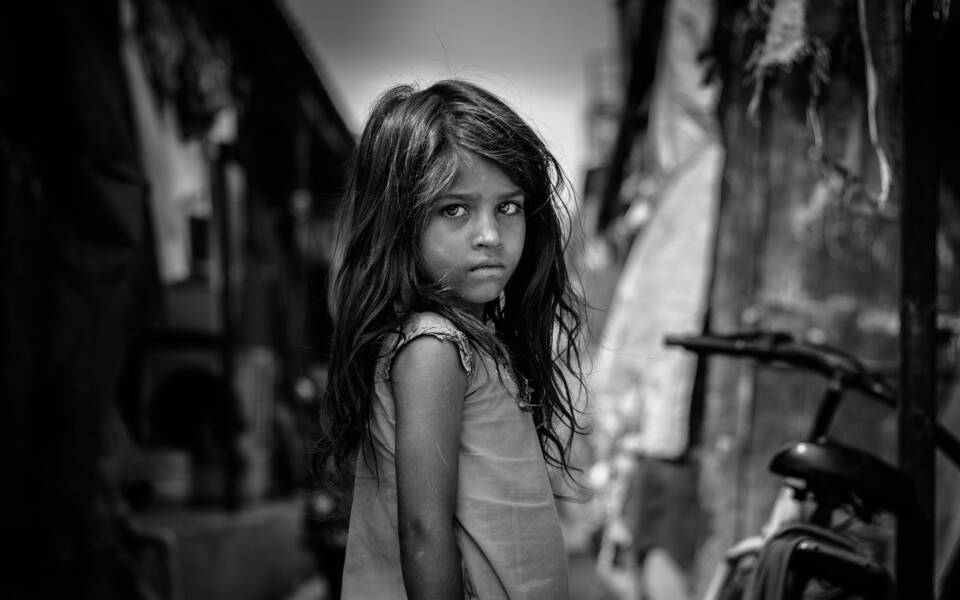Not a Favoured Place for Raising Girls
14 Oct 2023
Opinion: Anupma Mehta.
As we marked the International Day of the Girl Child on October 11, it may be apt to ruminate about two other festivals soon to be widely celebrated across India—Durga Puja, when obeisance is paid to Maa Durga, the goddess of power and strength, and Diwali, when Goddess Lakshmi is worshipped as the harbinger of wealth and prosperity. Yet, these festivities also raise a strange paradox—in a land where goddesses are venerated as symbols of power and prosperity, the girl child often represents the antithesis of these two attributes, usually facing subjugation and deprivation in many households.
This conundrum of reverence versus neglect plays out at the ground level in various States across India. Here let us cite the example of Goa, because as per the last Census, it is one of the richest and most empowered States in India, enjoying the highest GDP per capita among all States, equivalent to two-and-a-half times the GDP per capita of the country as a whole. The State also records an impressive performance where other significant parameters of gender equality are concerned—it has achieved a female literacy rate of nearly 85 per cent, is way ahead of the national average in the proportion of women-headed households, and has a uniform civil code that offers women many rights, which their counterparts in other States do not have. Certainly an impressive score card!
And yet, as per the latest National Family Health Survey (NFHS-5), conducted during 2019-21, the State registered a sharp decline in the sex ratio at birth to 838 from 966 per 1000 in NFHS-4, ostensibly indicating as much a prevalence of son preference here as in other States. The gender discrimination becomes more evident as one enters the interiors of rural Goa. Social workers reveal that in the Sattari taluka of North Goa, for instance, the gender of a new-born child is announced through the sweets distributed at birth and the fire crackers that follow—while boys are welcomed with pedas, the birth of a girl leads to the distribution of jalebis. The handing out of pedas is followed by a profuse bursting of firecrackers whereas the jalebis are accompanied by a muted and shorter round of crackers. Such gender discrimination, prevalent in most villages in the taluka, reportedly transcends the social and economic status of households.
This condition of the girl child in one of the richest and most educated States of India clearly suggests that neither wealth nor education can guarantee women’s empowerment. The India Human Development Survey (IHDS), conducted by the National Council of Applied Economic Research (NCAER) in collaboration with the University of Maryland, USA, in 2004-05 and 2011-12, also finds that child well-being across the country is highly gendered. The IHDS documents that, on an average, 52 per cent of the births in India are those of boys while only 48 per cent are those of girls. Despite the passage of the legislation in 2001 against sex selection of the unborn child, the skewed sex ratio throughout the country indicates that the law is honoured only in the breach, suggests the IHDS.
Statistic after statistic confirms the unwanted status of the girl child in India. The NFHS-5 further shows that malnutrition contributes to the under-five mortality rate, which is 8.3 per cent higher for girls than boys, primarily because baby girls are breastfed for a shorter duration and consume lesser milk than baby boys. The discrimination, especially in health and education, continues from infancy to adolescence to adulthood. Until 2016, 54 per cent of India’s adolescent girls were anaemic, and only 41 per cent of females have 10 or more years of schooling as compared to 50.2 per cent of males.
Globally too, the persistent empirical perception about India’s poor performance on gender parameters has been gaining ground. A survey conducted by US News and World Report in association with Wharton School of the US in 2020 stated that India is not a favoured place for raising girls or for the safety of women. Among the list of best countries for women, India was ranked as low as 58 among 73 countries. And it languishes at the 127th position among 146 nations in the World Economic Forum’s Global Gender Gap Index of 2023.
So, what can the Indian girl child hope for post celebrations of the International Day of the Girl Child this year? Will she benefit from the clarion call of “Invest in Girls’ Rights: Our Leadership, Our Well-being”, which was this year’s theme for the Day? Does the celebration of such notional events actually help eliminate gender abnormalities against girls in the country? On its part, the Government has been implementing a number of schemes to promote nutrition, education, and safety for girls, including the flagship programmes of Beti Bachao Beti Padhao, Balika Samridhi Yojana, Mukhyamantri Kanya Suraksha Yojana and Laadli Lakshmi Yojana, among others. But as the Goa experience shows, more concrete and concerted measures are needed at the grassroot level for ensuring gender equality across urban and rural households in the country. It is obvious that unless a change is championed in deeply entrenched social and patriarchal attitudes, the Indian girl child cannot really bloom.
Anupma Mehta is Head of Publications and Senior Editor at NCAER. Views are personal.
Published in: QRIUS, 14 Oct 2023






